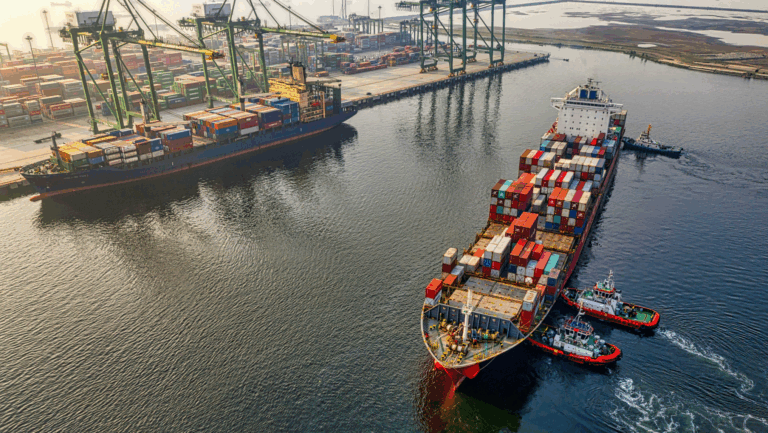Impacts of Natural Disasters on California Farming
Meet Farmer Jamie Johnson
West Coast surfer and California avocado rancher, Jamie Johnson, has spent the greater part of his adult years cultivating his love for the land. As a fourth-generation farmer, it was Jamie’s grandfather and great-grandfather who first shared this honorable way of life. As seen in our documentary Jamie Johnson: An American Farmer, Jamie’s first memories of farming began out in the avocado fields as a boy, watching his grandfather touch and closely examine each tree. “Do you have to touch every tree, Grandpa?” He would ask.
Today, Jamie finds himself doing the exact same thing as he walks along the fields with his sons. After taking over his grandfather’s avocado farm, Rancho Simpatica, Jamie was inspired to expand his legacy even further for future generations. Rancho Dos Pueblos became the next chapter of his story. Like his grandfather and great-grandfather, Jamie was determined to take a parcel of land and grow it into something greater.
During the 2017 Thomas fires, Rancho Dos Pueblos almost came to its abrupt end but was fortunately spared of any serious damage. Click below to listen to Jamie’s inspiring story and to hear more about the natural challenges California farmers and ranchers face throughout the year.
California’s Unique Climate Supports Diversity of U.S. Agricultural Commodities
Among all U.S. states, California remains the leader in cash farm receipts—representing nearly 13 percent of the sector. The state’s farmers and ranchers are responsible for producing the majority of our nation’s dairy, grapes, and nuts such as almonds, pistachios, and walnuts. It’s also the only state that grows almond trees for commercial use. In 2017 alone, the almond industry reported $4.5 billion in export sales. Fruits, nuts, and vegetables remain the leading commodities in nearly 80,000 California farms and ranches and represent more than 200 different crops.
Not only is California a leading export state in the U.S., but its diversity in unique commodities truly make it an agricultural giant. California farm operators supply the majority of our country’s almonds, apricots, dates, kiwi fruit, nectarines, olives, pistachios, prunes, and walnuts. In 1914, the exportation of avocados was banned due to a fear of insect infestation and cheaper competition. But the North American Trade Agreement (NAFTA) in 1994 lifted this ban and opened the door to the global trade of avocados. Mexico, Peru, and Chili began exporting 90 percent of our avocado supply after 2001 as the avocado craze intensified to keep up with growing demand. Up until then, all avocados in the U.S. came directly from the state of California.
The Economic Impact of Agriculture on California and U.S. Economy
In 2017, 14.9 percent of U.S. agriculture exports came from the state of California. Agriculture has provided tremendous value for the state’s economy, raking in over $47 billion in 2015. California’s gross domestic profit (GDP) is greater when compared to entire countries such as France, India, and Italy. The state’s agricultural goods make up nearly 2 percent of the 2.66 trillion GDP, which may not seem significant in an economy like California; however, this is a significant number for a state that ranks as the sixth-largest economy in the world. California is also responsible for 12.5 percent of total agricultural production in the U.S. To put it in perspective, this is over $19 billion greater than the second-largest state, Iowa. The unique and diverse qualities in California crops easily establish it as a global economic power.
Environmental Impacts and Unpredictable Circumstances of Farming in California
California farmers must combat new obstacles every day that are beyond their control to keep up with the demand as a global agricultural powerhouse. Three unpredictable factors that continue to significantly impact California agriculture production are labor shortages, access to high-quality water, and wildfires.
Labor Shortage
Fruit and nut tree growers are among the most affected by the increasing labor shortage issue because these commodities are the most labor-intensive. An increase in worker compensation and a need for immigration reform are the two main factors associated with the ongoing shortage of farmworkers. New legislation sponsored by the United Farm Workers requires farm owners to provide additional benefits to workers. While these hard-working individuals deserve fair wages, farm owners are struggling to balance labor costs with staying competitive in the global market. In fact, 70-80 percent of variable costs for California farmers involve labor. This, combined with the need for a better legal workforce system, puts a lot of pressure on farm owners to produce commodities more efficiently as a way of offsetting the lack of legal workers available as well as labor costs.
Water Shortage and Droughts
Water quality and quantity are top priorities in California agriculture. Over 50 percent of the state’s population are experiencing abnormally dry areas, with 4 percent currently in a drought. 2018 revisions to the Clean Water Act would erase protections for ephemeral or intermittent waterways that only flow after precipitation. This lift on federal protections would allow growers more freedom to use the resources on their land in the fullest capacity, but proper education about water and soil sustainability is imperative to maintain proper water quality for future generations. The Natural Resources Conservation Service (NRCS) works to provide farm operators who implement conservation strategies with technical assistance and financial incentives. Other organizations, like the Water Foundation, are committed to educating and enabling the community with innovative approaches to provide lasting water solutions that work for the communities, economies, and environment in California. Proposition 1 of the Water Bond allocates $7.5 billion to aid in water conservation efforts like groundwater storage, watershed protection, flood protection, and water restoration to combat the effects of California droughts.
Wildfires
Prolonged droughts, water shortages, and strong coastal winds combined with record-high heat waves bring higher risks for wildfires in California. In 2019 alone, there were 7,860 fire incidents resulting in 259,823 acres burned. This was relatively low compared to the 1,963,101 acres burned in 2018, mostly due to the record-breaking Mendocino Complex Fire. The California Department of Forestry and Fire Protection (CAL FIRE) predicts fire potential to be above normal for 2020 as a result of high offshore winds. Wildfires can also trigger other negative consequences like power outages and mudslides that further devastate farmlands, livestock, and crops.
How Natural Disasters Affect California Farmers
Jamie Johnson can share from personal experience the impact wildfires can have on a farmer’s crop and personal wellbeing. The end of 2017 marked the beginning of one of the largest fires in California history and it started only 20 miles away from Jamie’s property. The Thomas fire burned for six months straight and wiped out 281,893 acres. The Thomas fire destroyed over 1,000 structures and cost nearly $10 billion in damages. This record-breaking fire raged right up to Jamie’s property, Rancho Dos Pueblos. For 18 days straight, he waited in tense anticipation to see if the Thomas fire would wipe out the newly-renovated land of young avocado trees. To his relief and the relief of his family, the fire was contained just in time. Unfortunately, not all California farmers were as fortunate—Brokaw Ranch lost 80 percent of their avocado crop that year due to the destruction of the Thomas fire.
What California Farmers Can Do to Protect Their Land
Natural disasters are inevitable, unpredictable, and part of life as a farmer. There are steps farmers can take to mitigate losses due to natural disasters. The more prepared a farmer is for the worst, the less impactful it will be on their livelihood.
- Implement land and water management strategies during a drought;
- Stock up on essentials;
- Be aware of potential fire hazards;
- Keep an ongoing inventory of farm assets; and
- Deter diseases with biosecurity measures.
Learn more about tips to prepare your farm for a natural disaster.
State Programs and Resources to Combat Wildfires
The state of California understands the possible detrimental effects of natural disasters and offers state-funded programs and resources. The Office of the State Fire Marshal (OSFM) provides training and education on proper fire prevention procedures. The California Department of Forestry and Fire Protection (FRAP) assesses and analyzes California’s forests and rangelands to reduce public safety risks. The Forest Health Grant Program awards funds to implement projects associated with restoring and conserving California forest health and minimizing the loss of forest carbon from large wildfires. The Fire Prevention Grants Program allocates funds from the California Climate Investments (CCI) for projects like dead tree removal, fire prevention planning, and fire prevention education.
Alternative Financing Helps California Farmers Prepare for the Worst
You can never fully predict when and to what magnitude a disaster will impact your farming operation. This uncertainty of the future is one of the biggest obstacles a U.S. farmer must overcome. Alternative finance loans can ease potential short-term stressors while helping prepare a long-term plan to rebuild a stronger foundation than before. AgAmerica is at the forefront of risk-management strategies. We offer customized financing packages, like a 10-year line of credit, to give farmers and ranchers a safety net when disaster strikes. In hard times and good, we are passionate about helping the U.S. Farmer sleep better at night. Speak with one of our lending experts today to learn more about our flexible financing.







